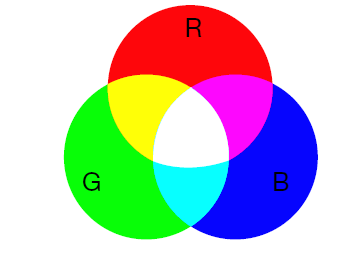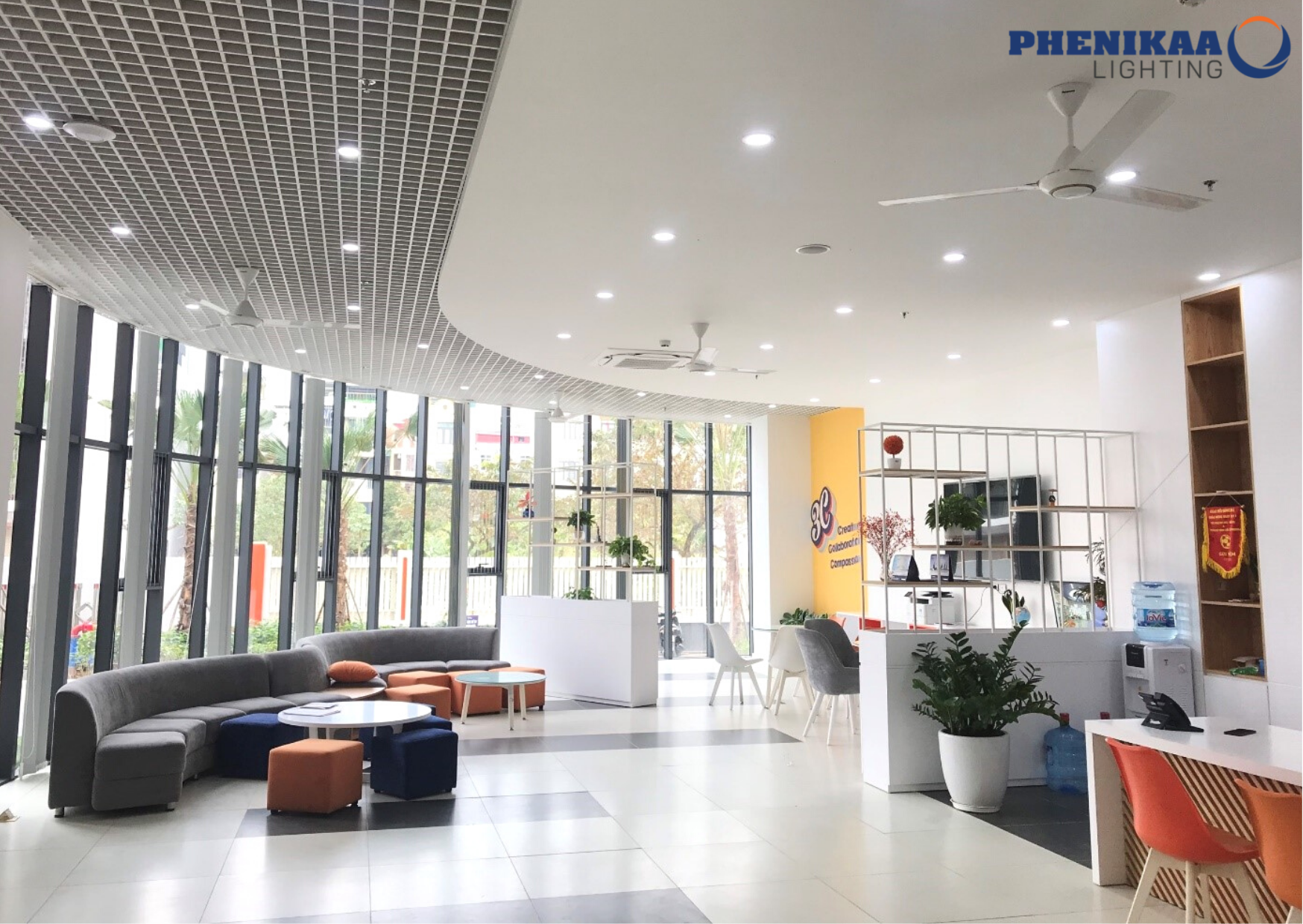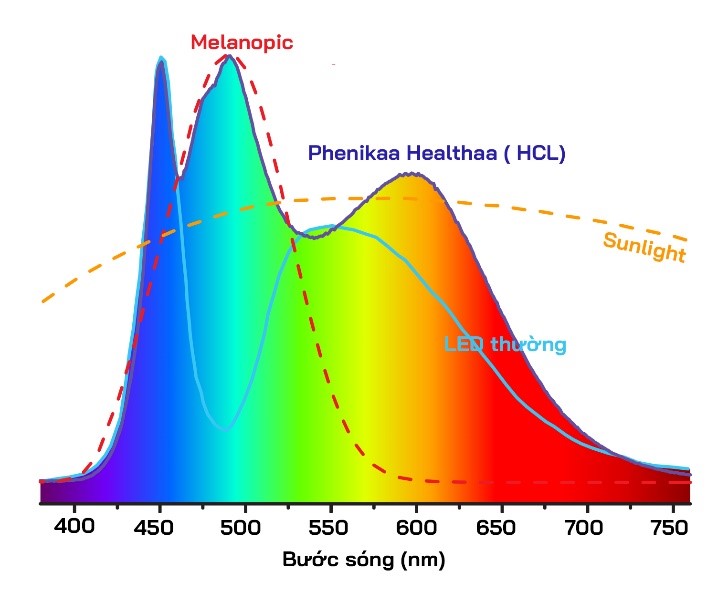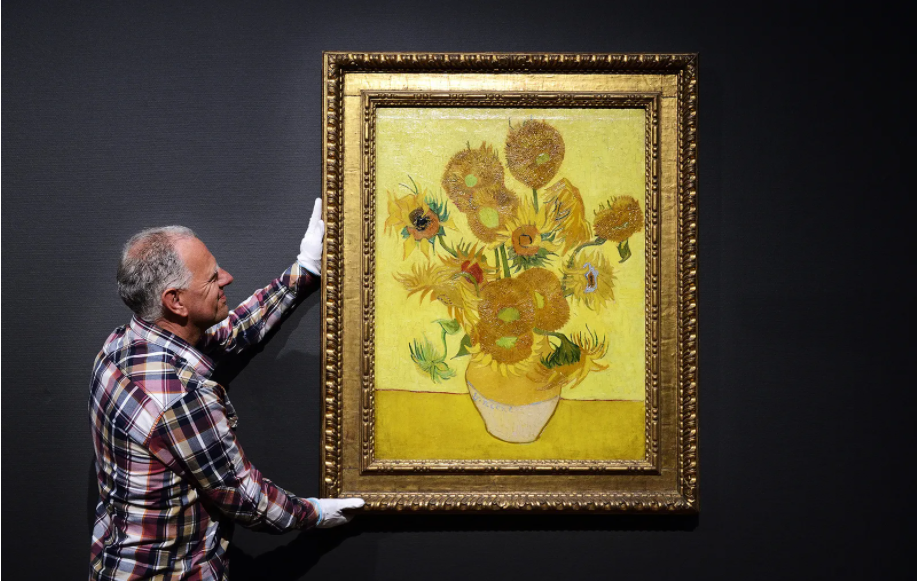Phenikaa Lighting - “The perfect version” of natural light
Thousands of years ago, human civilization always revolved around natural light and many religions worshiped the sun as the source of all life. Nowadays, when artificial light gradually replaces the sun, we realize the important role of natural light and always make efforts to bring natural light into living space. With Phenikaa Natural TrueCircadian natural lighting technology, Phenikaa Lighting has affirmed its "perfect" alternative, responding to the natural light trend, helping people balance their lives.
 Modern people always want to enjoy a space filled with natural light (Source: Unsplash)
Modern people always want to enjoy a space filled with natural light (Source: Unsplash)
Natural light - Lighting trend for people
Exposure to natural light helps the body produce Vitamin D, improves circadian rhythms and sleep patterns, helps us focus, gets more done, and more, has a positive effect on mental and emotional well-being. makes us happier, more joyful. Ensuring an adequate supply of this vital light is key to one's physical and mental well-being. Therefore, natural light is always the leading lighting trend that people care about and becomes the dominant technology trend in the modern lighting industry at this time.
 The sun is the main factor that has a great influence on our color perception and especially directly affects each person's circadian rhythm (Source: Unsplash)
The sun is the main factor that has a great influence on our color perception and especially directly affects each person's circadian rhythm (Source: Unsplash)
To help people actively expose themselves to natural light, lighting experts have come up with two approaches: (i) bringing natural light into living spaces by architectural solutions and techniques such as opening windows, skylights..., installing systems to collect natural light from outside; (ii) efforts to make light sources capable of “replicating” the spectrum of sunlight. Among artificial light sources, the highly customizable LED light source is increasingly proving to be a good and suitable candidate for this purpose. We need to know, white light emitted by the sun is a broad spectrum containing all colors, including 7 basic monochromatic colors: red, orange, yellow, green, blue, indigo, violet. For a long time, scientists have found a delicate combination of the three primary colors red, green (green) and blue (blue) to produce white light and the principle of light. This has been widely used in fluorescent and compact fluorescent lamps (small power fluorescent lamps). This technology continues to be approached and developed to create white light emitting diodes (white LED).
 The principle of mixing colors to create white light from three monochromatic colors of red (R), blue (blue) and green (Source: Phenikaa Lighting)
The principle of mixing colors to create white light from three monochromatic colors of red (R), blue (blue) and green (Source: Phenikaa Lighting)
Limitations of commercial LEDs against the natural light trend
Light-emitting diodes (LEDs) are the heart components of solid lighting technology or current lighting technology with many advantages such as energy saving, high luminous efficiency, environmental friendliness and special ability functions can be easily integrated with electronic control systems to become intelligent lighting systems.
 With its advantages, LED lights are gradually replacing traditional lights, becoming the optimal choice for modern lighting equipment (Source: Phenikaa Lighting)
With its advantages, LED lights are gradually replacing traditional lights, becoming the optimal choice for modern lighting equipment (Source: Phenikaa Lighting)
However, until now, conventional commercial white LEDs have had a huge limitation compared to natural light, which is the lack of blue-green light region (wavelength range from 460-500 nm) and the red light region (the region with wavelengths from 640-700 nm). This shortfall makes the color rendering coefficient (CRI) of the LEDs not really good. Conventional LEDs have a CRI of ~80 (Ra), while the CRI value of sunlight is 100 (Ra). In addition, the blue-green region is the region of the wavelength to which the eye's photoreceptors ganglion cells (ipRGCs) are most sensitive, and is also known as the circadian light spectrum region (which controls the human circadian rhythm). This is the core point in Human centric lighting (HCL), a distinction that conventional light sources or conventional HCL lamps do not have.
Phenikaa Lighting LED - “perfect version” of natural light
Understanding the needs of human light, scientists and lighting experts at Phenikaa Group have comprehensively and systematically studied the solar spectrum, human evolution associated with the forest edge. and grasslands, the spectrum of light transmitted directly and scatteredly on vegetation in different environments (on grasslands, forest edges, under trees...) to optimize parameters of LEDs for different environments, different spaces and applications. From there, it was the premise to develop Phenikaa Natural TrueCircadian natural lighting technology, which reproduces natural light, creating a quality light source for human health.
 Phenikaa Lighting LED lights apply the exclusive lighting technology Phenikaa Natural TrueCircadian, reproduce natural light, create a quality light source, for human health. (Source: Phenikaa Lighting)
Phenikaa Lighting LED lights apply the exclusive lighting technology Phenikaa Natural TrueCircadian, reproduce natural light, create a quality light source, for human health. (Source: Phenikaa Lighting)
Using computational simulation tools, fluorescent powder fabrication technology and LED encapsulation technology, Phenikaa Group experts have invented blue LEDs and blue LEDs with coordinates standard colors, allowing integration with commercial white LEDs to produce high quality white light sources (with a general CRI > 90, a red color rendering index R9 > 90) and especially The added circadian light region (460 – 500 nm) allows an effective impact on the human circadian rhythm.
 The light spectrum of the Phenikaa Tunaturaa lamp with excellent light quality (CRI color rendering coefficient is up to 90/100 compared to sunlight is 100) and R9 index up to 90 and light production index M/ P reached 1.09. The recess in the bioluminescent region (460 -500 nm) was completely filled and the red light region was added. (Source: Phenikaa Lighting)
The light spectrum of the Phenikaa Tunaturaa lamp with excellent light quality (CRI color rendering coefficient is up to 90/100 compared to sunlight is 100) and R9 index up to 90 and light production index M/ P reached 1.09. The recess in the bioluminescent region (460 -500 nm) was completely filled and the red light region was added. (Source: Phenikaa Lighting)
With Phenikaa Natural TrueCircadian natural lighting technology combined with OSRAM LED chip - the world's leading LED chip, Phenikaa Lighting has brought a superior quality lighting system, allowing light sources to produce high color rendering index. and the light spectrum matches the circadian rhythm, helping to maintain a healthy body, optimal for visual and non-visual perception. Different from today's common HCL LED products, Phenikaa Lighting's Healthaa LED and Tunaturaa LED products are optimally designed both optically and bio-optically, giving natural light very close to the light. sunlight (the highest CRI is 97/100, the highest R9 is 95/100) and has enhanced photoreceptor ganglion cell high sensitivity (M/P = 0.95 - 1.18) - the highest value among HCL lamps in the world), helping to regulate the body's circadian rhythm, improve working efficiency, create comfort and happiness for users.
Leading the trend with Vietnamese know-how and breakthrough lighting solutions, Phenikaa Lighting reproduces natural light, creates a quality light source, for human health, inspiration and energy. positive, along with smart lighting solutions that enhance comfort and enjoyable experiences for a better life.

